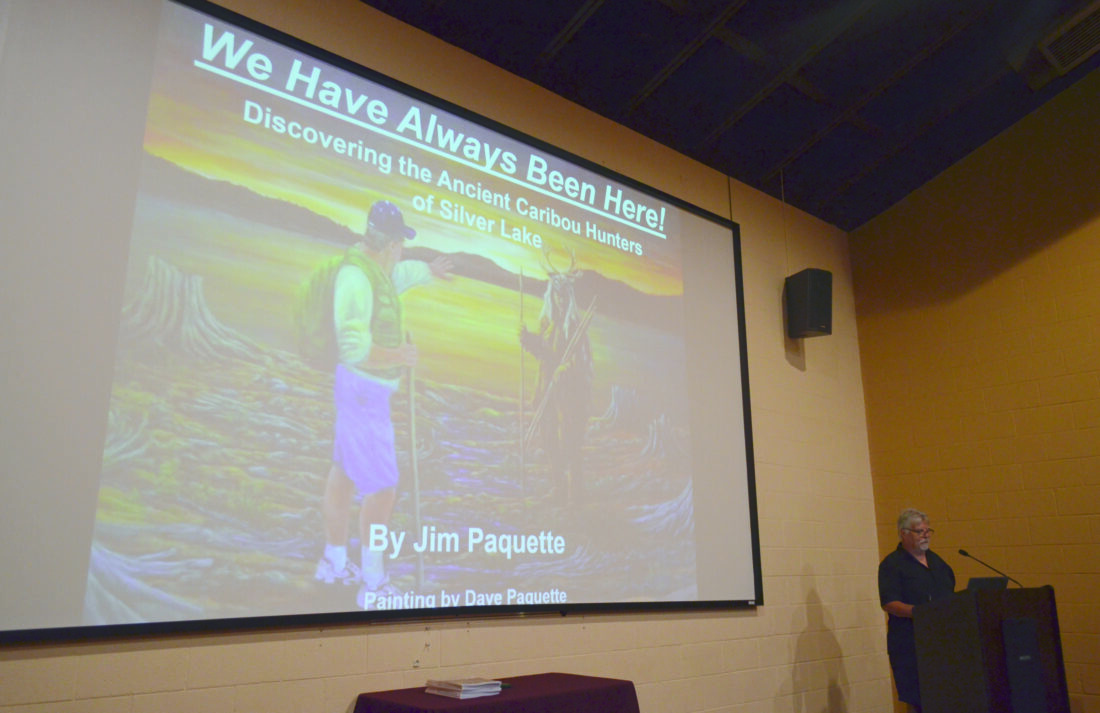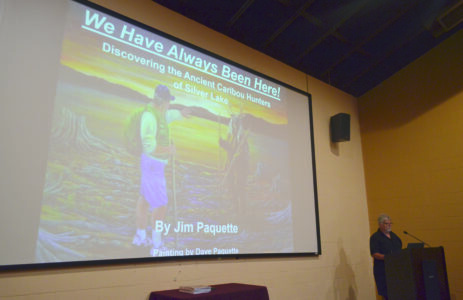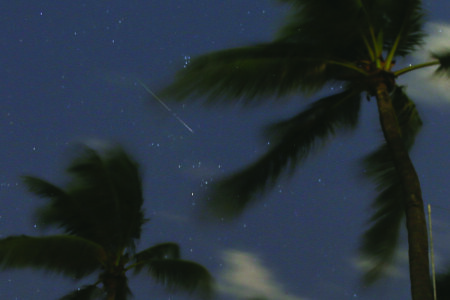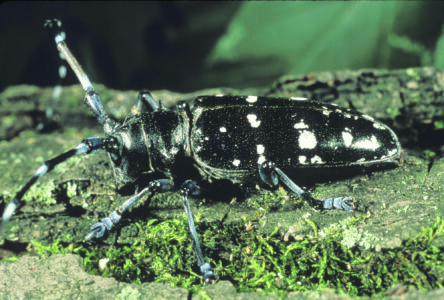History presentation recalls discovery of Paleo-Indian artifacts

Jim Paquette, a local historian and archaeologist, presented his research on Paleo-Indian artifacts in the central Upper Peninsula at the Michigan Iron Industry Museum on Tuesday. (Journal photo by Abby LaForest)
NEGAUNEE — The Michigan Iron Industry Museum hosted local historian and archaeologist Jim Paquette on Tuesday, where he shared stories of his research and discovery of Paleo-Indian artifacts in the U.P. as part of the summer presentation series.
An Anishinaabe elder with French Canadian-Métis ancestry, Paquette introduced his presentation, titled “We Have Always Been Here: The Ancient Caribou Hunters of Silver Lake,” by recounting his desire to prove how his ancestors have always been present in the Upper Peninsula, since the end of the last Ice Age, which set him off on his journey to find physical proof of his claim. His presentation was based on archaeological surveys from the 1980s to the 2000s, documenting the highs and lows of his experiences conducting this research.
“As an amateur archaeologist, what I wanted to prove was that my own native ancestors have lived here in the Upper Peninsula since the end of the last ice age over 10,000 years ago,” said Paquette. “And previous to me going out and doing that, no one had ever done that. In fact, I was sort of laughed at by some of the archaeologists that were around back then. They said ‘Well, that never happened, there’s nothing in the Upper Peninsula of Michigan.”
Paquette’s work, beginning in 1984, would prove them wrong in the years to come. He recalled having a coworker of his contact him while fishing up on Silver Lake, near Champion, upon finding what the fisherman thought was a quartz scraper.
“He stops by the house, and he’s holding it in his hand…just as he’s walking into the front door, and I almost fell over because it was…called an agate basin spear point. And again, it’s something that’s 12,000 to 11,500 years old,” Paquette explained.
During his time searching for Paleo-Indian artifacts, he worked with Dr. Marla Buckmaster, an archaeologist and anthropology professor at Northern Michigan University, Negaunee historian Frank Matthews, and fellow NMU alumnus John Gorto. His presentation included recounting his 1987 discovery of the 10,000-year-old Gorto Site, located at Deer Lake in Ishpeming, where Paquette and Gorto discovered a collection of Paleo-Indian spear points. Paquette explained each step in the process of his journey, which included discovering the Gorto Site, sending years of documentation and data to the office of the state archaeologist, publishing papers on his findings, and more.
“Really, the focus is just part of reminding people that we’ve always been here as people, as human beings. When we think about our history, today we’re at the Michigan Iron Industry Museum. It’s easy just to think about ourselves as being here (and) going back in history, and when we think of ourselves as people that lived (here) – myself as someone who lives in Negaunee – we’re surely learning about mining, the iron mine industry, which goes back to the 1840s,” Paquette said while introducing his presentation. “But for thousands and thousands and thousands of years before the first miners ever came here, people have lived right here.”
The Michigan Iron Industry Museum has two more free presentations that will be taking place during their summer series this year: “He Went Down with His Ship: Captain Burke & the Steamer Arlington” with local historical Dan Fountain at 2 p.m. on Aug. 12, and “A Tale of Two Paternalisms: Comparing the Paternalism of the Michigan Copper & Iron Districts” with Dr. Allie Penn of Wayne State University at 2 p.m. on Aug. 19.
The Michigan Iron Industry Museum is located at 73 Forge Road in Negaunee, and questions can be directed to 906-475-7857.
Abby LaForest can be reached at 906-228-2500, ext. 548. Her email address is alaforest@miningjournal.net.





